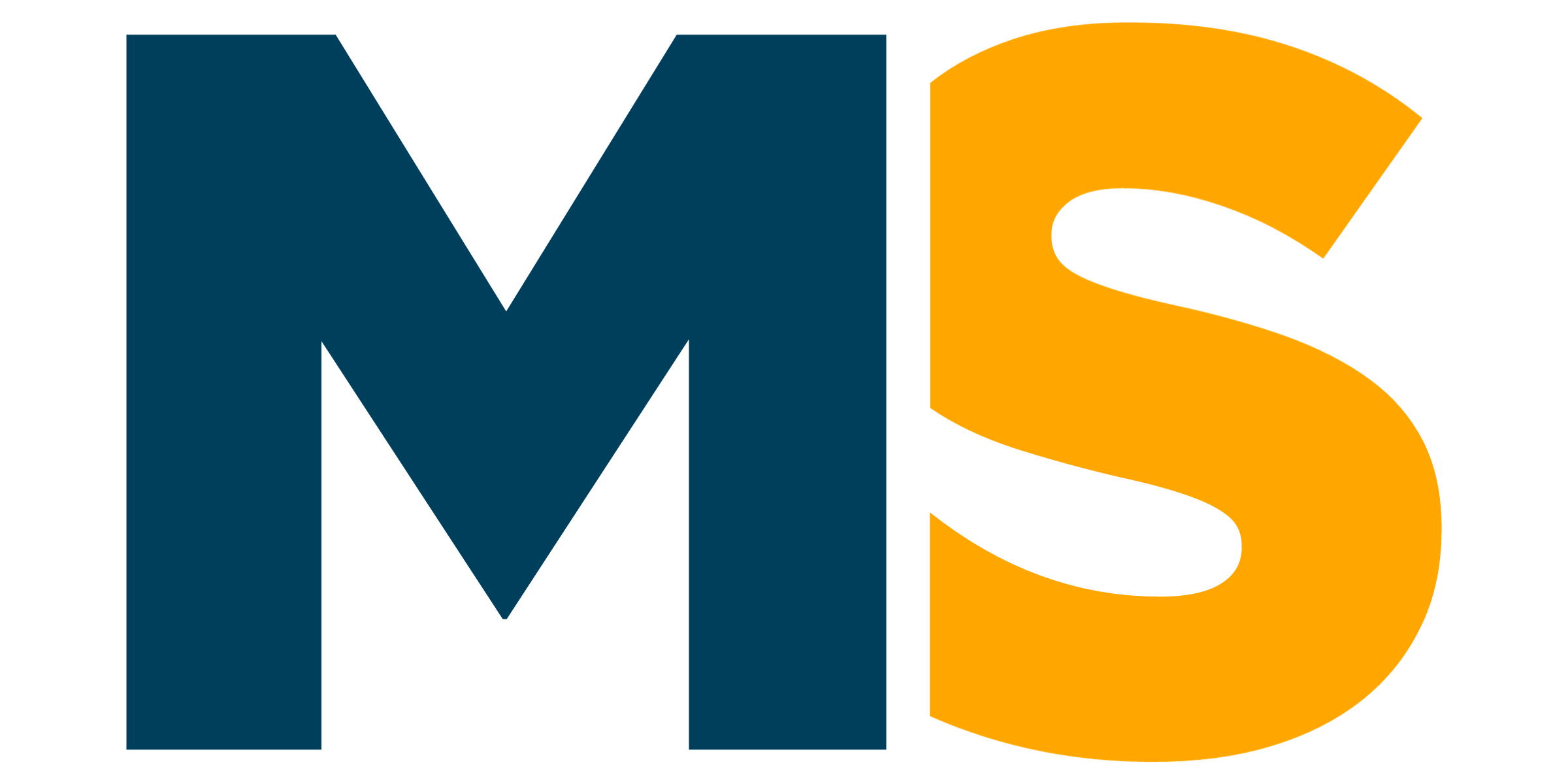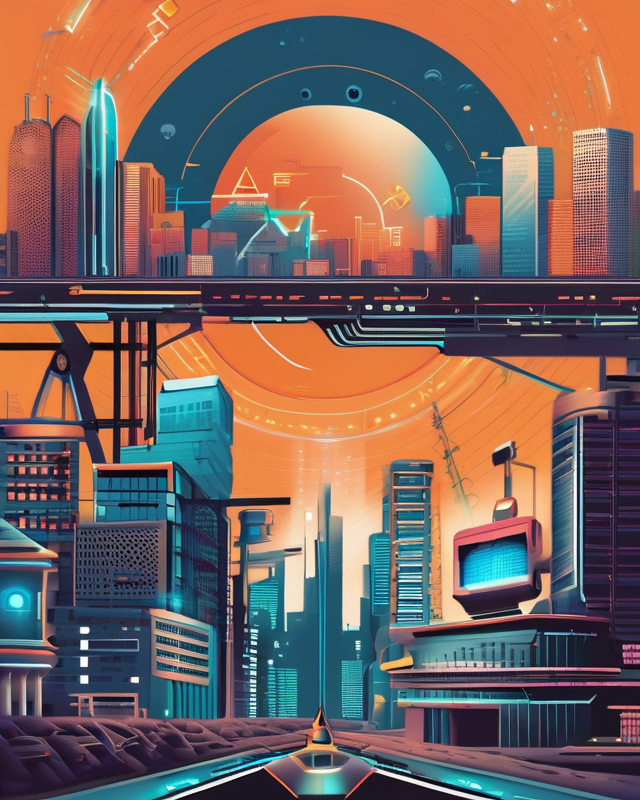In the modern era, the intersection of artificial intelligence (AI) and creative industries has become a groundbreaking development. AI, a broad field of computer science, is now employed as a tool in the creative sector for ideation, creation, and distribution, including generating original artwork, music, and scripts. Far from replacing human artists, AI is enhancing creativity, learning and adapting, and exploring new boundaries of innovation.
The role of AI in the creative sector is expanding rapidly, disrupting traditional processes, redefining possibilities, and offering unique opportunities across various artistic fields. From AI-painted artworks to intelligent algorithms writing scripts, these systems are making their mark and shaping the future of creativity. Understanding this impact is crucial for those involved in the industry as well as those interested in broader cultural and societal implications.
This blog post will delve into AI’s presence in the creative industries, exploring how it complements human ingenuity and fosters collaboration. As we uncover technologies used in artwork, music, and scripts, and tackle ethical considerations, we invite you to join us on this journey into the future of creativity, where human imagination meets artificial intelligence.
AI in Artistic Creation
As AI continues to permeate the art world, two technological concepts stand at the forefront: deep learning and Generative Adversarial Networks (GANs). Deep learning, a subset of machine learning, employs algorithms to mimic the way the human brain works, processing data through multiple layers of artificial neural networks. This enables AI systems to learn, adapt, and create with a degree of sophistication that was unimaginable just a few years ago.
However, the real game-changer in AI art is GANs. A GAN involves two neural networks: a generator that creates images and a discriminator that evaluates the generated images based on the training data it has received. The two networks work in tandem, effectively “arguing” with each other until the generator produces an image that the discriminator can’t distinguish from a human-created one. This iterative process is behind some of the most exciting AI-generated art we see today.
The Role of Data and Training in Creating AI Art
Just as human artists need inspiration and instruction to master their craft, AI systems require vast amounts of data and extensive training to generate credible artwork. These AI models learn by examining thousands, if not millions, of images, identifying patterns, and drawing insights. The quality of data and the training process directly influence the AI’s artistic capability.
When provided with a dataset of classical paintings, for instance, an AI can learn to generate its own images that echo the same style. By altering the data source, AI can shift styles, mimicking a diverse range of artistic movements and artists’ individual styles, from Renaissance portraiture to abstract expressionism.
Examples of Famous AI-generated Artworks and Their Reception in the Art World
One of the most renowned examples of AI art is the portrait of Edmond De Belamy, created by Paris-based collective Obvious using a GAN. The artwork, despite its slightly blurry and dreamlike quality, fetched an astounding $432,500 at a Christie’s auction in 2018, signifying a shift in the art world’s acceptance of AI-created works.
Another notable example is “AICAN,” an AI artist created by Rutgers University researchers. AICAN has produced artwork that viewers in a double-blind study found indistinguishable from works created by human artists.
However, the reception of AI-generated art hasn’t been universally positive. While some laud these works as a new form of artistic expression, others question whether creations devoid of human emotion or lived experience can be considered art in the true sense.
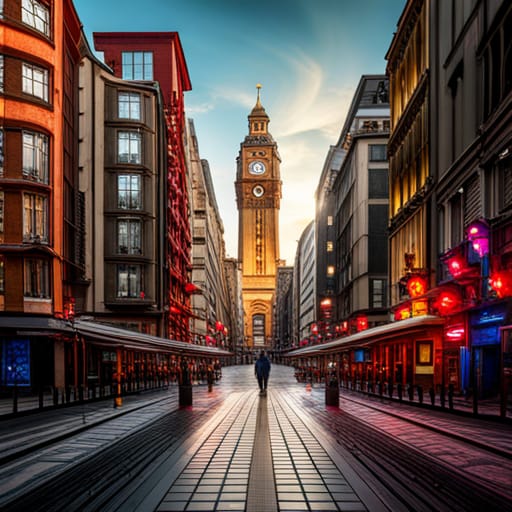
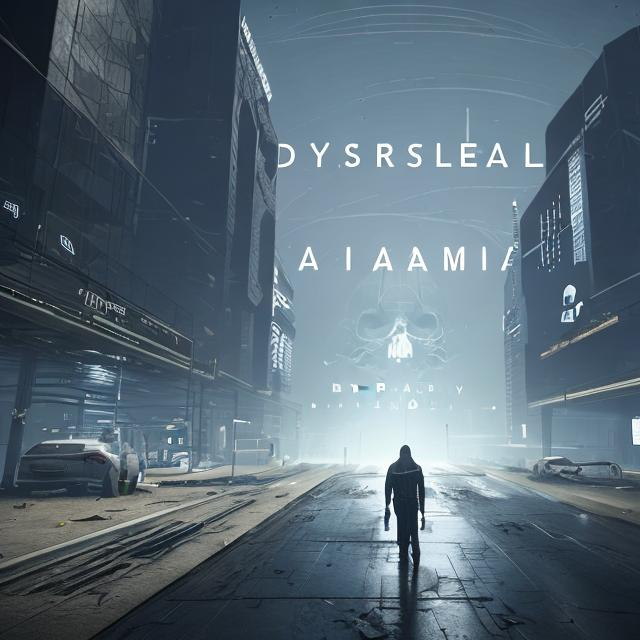
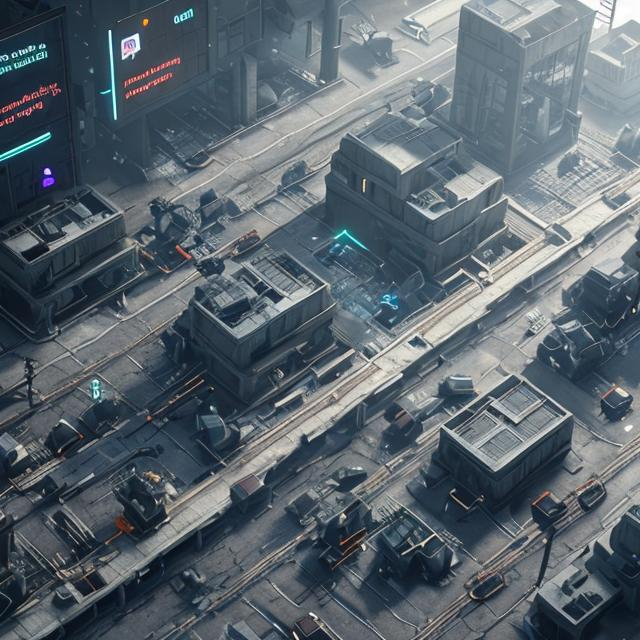
Implications for Traditional Artists and the Concept of Authorship
AI’s foray into the art world raises profound questions about creativity and authorship. Who is the true author of AI-generated art – the AI that created it or the programmers who designed and trained the AI?
While AI-generated art challenges traditional artists to embrace new technologies, it doesn’t signify the end of human-made art. On the contrary, it provides a new tool for artists to experiment with, potentially leading to unforeseen creative avenues and collaboration opportunities between human and machine.
Yet, the dialogue around authorship, copyright, and the valuation of AI-generated art remains complex and unsettled. These are issues that society, legal systems, and the art world will continue grappling with as AI’s creative potential unfolds.
AI-Composed Music
The marriage of AI and music isn’t a new phenomenon. For years, algorithms have played a part in music recommendation services, like Spotify’s Discover Weekly. But the next leap forward—AI not just recommending but creating music—has arrived. Today, AI can generate harmonious and emotionally resonant pieces, expanding the boundaries of what we thought computers could do.
Analysis of AI Music Generation Techniques, Including Recurrent Neural Networks (RNNs)
Much like its role in visual art, AI uses complex algorithms to learn and create music. One of the key techniques involves Recurrent Neural Networks (RNNs), a type of artificial neural network designed to recognize patterns in sequences of data, such as musical notes.
RNNs use the concept of “memory” about previous calculations, applying this knowledge to inform the ones they’ll make next. This “memory” makes RNNs particularly suitable for tasks where the order of data points is crucial—like in a melody or harmonic progression.
Exploring AI Music Collaborations with Human Artists
AI’s role in music creation isn’t limited to standalone composition—it’s also proving a valuable collaborator for human artists. Musicians and composers are using AI tools to generate ideas, create unique sounds, and even perform alongside them.
For instance, Taryn Southern, a pop singer and digital storyteller, used AI software Amper to compose her album “I am AI“. Southern provided inputs about the desired style and mood, and the AI generated different musical elements, which Southern then arranged and pieced together into songs.
The Impact of AI on Music Creation and Its Commercial Applications
The advent of AI in music extends beyond artistic exploration—it also has a significant commercial dimension. AI can compose music for advertisements, video games, and movies, often at a fraction of the cost and time required for a human composer.
Moreover, AI is helping to democratize music creation, enabling those without traditional musical training to compose and experiment. This trend holds the potential to transform the music industry, opening up new avenues for creativity and experimentation.
Yet, much like AI-generated art, AI-composed music also raises questions about authenticity, copyright, and the future of human artists. As these technologies become more mainstream, we must engage in ongoing conversations about the role of AI in music and the value we place on human creativity.

AI in Scriptwriting and Storytelling
Beyond painting canvases and composing music, AI is also dipping its virtual pen into the realm of scriptwriting and storytelling. The entertainment industry is exploring AI’s potential to streamline the creative process, generate fresh ideas, and even write entire scripts. By analyzing patterns in data from existing scripts or novels, AI can generate dialogue, plot points, and narrative arcs, potentially saving scriptwriters time and effort during the ideation process.
Natural Language Processing (NLP) and Its Role in Scriptwriting
At the core of AI’s ability to write is a field called Natural Language Processing (NLP). NLP, a branch of AI, involves the interaction between computers and human language. It allows machines to understand, generate, and respond to human text in a way that’s both contextually and grammatically accurate.
For scriptwriting, NLP can be trained on a corpus of screenplays to learn common dialogue patterns, character developments, and narrative structures. By understanding the intricacies of language and storytelling, AI tools can then generate new, coherent, and contextually relevant text, effectively crafting narratives that might take a human writer significantly more time to develop.
Case Studies of AI-assisted Scriptwriting and Storytelling Projects
Several fascinating projects highlight the potential of AI in scriptwriting. One notable example is the short film “Sunspring,” whose script was entirely written by an AI trained on numerous sci-fi screenplays. The resulting narrative, while undeniably unique and somewhat abstract, demonstrated that AI could indeed create content that engages audiences.
Another example is “AI Dungeon,” a text-based adventure game that uses AI to generate dynamic storylines. In response to user input, the AI creates new plot twists, characters, and settings, offering a different gaming experience every time.
Challenges and Ethical Considerations in Using AI to Craft Narratives
While AI’s foray into scriptwriting is undoubtedly exciting, it’s not without its challenges. The quality of AI-generated content is often inconsistent, and its narratives can lack the emotional depth and nuance that a human writer might bring.
Moreover, using AI to generate narratives raises ethical considerations. Is it right to use AI to create content that traditionally relies heavily on human creativity and emotion? And who should be credited as the author of an AI-generated script?
As AI’s role in scriptwriting and storytelling evolves, we must grapple with these questions. By doing so, we can ensure that the technology is used responsibly and ethically, augmenting human creativity rather than replacing it.

Creative Industry Applications: Beyond Art, Music, & Writing
AI in Design and Visual Content Creation
AI’s disruptive influence extends to the design industry as well. Graphic design, architectural design, and fashion design are among the fields leveraging AI to innovate and optimize creative processes.
In graphic design, AI tools can automate routine tasks, provide inspiration, and even generate unique designs. Tools like Adobe’s Sensei use AI to understand design aesthetics and offer intelligent editing options, improving efficiency and fostering creativity.
Architectural design, too, is benefitting from AI. Algorithms can analyze data about the site, local building codes, and desired functionalities to generate design concepts, saving architects considerable time.
In fashion, AI can analyze trends, predict what designs will be successful, and even create new fashion designs. The result is a more streamlined and data-informed process that balances creative intuition with consumer preferences.
AI’s Role in Video Editing and Post-Production
Video editing and post-production work is often labor-intensive, but AI is helping to lighten the load. AI algorithms can perform tasks like color correction, sound editing, and even removing unwanted objects from scenes. Not only does this save editors time, but it also allows them to focus more on the creative aspects of their work.
Moreover, AI is playing a significant role in creating special effects. By analyzing vast amounts of data, AI can generate realistic CGI and VFX faster than traditional methods, paving the way for more complex and visually stunning films and videos.
Virtual Reality (VR) & Augmented Reality (AR) Experiences
As immersive technologies like VR and AR continue to evolve, AI is playing a key role in enhancing these experiences. AI can generate dynamic, responsive virtual environments, create realistic avatars, and even drive the narratives within these digital realms.
For instance, AI can adapt VR/AR experiences in real-time based on user behavior and input, providing personalized and engaging experiences that were previously unthinkable. The result is a more engaging, interactive, and immersive user experience that pushes the boundaries of reality and imagination.

AI in Marketing & Creative Advertising Campaigns
The realm of marketing and advertising isn’t immune to AI’s disruptive influence. Today, AI tools can automate content creation, analyze marketing data, personalize customer experiences, and even generate creative ad campaigns.
One striking example is the “Driven by Intuition” ad for the Lexus ES executive sedan, which was entirely scripted by AI. The AI analyzed 15 years’ worth of award-winning luxury advertisements and human emotional responses to them, resulting in a unique and successful ad campaign.
As these examples illustrate, AI’s role in the creative industries extends far beyond art, music, and writing. By embracing AI’s capabilities, creatives across all fields can drive innovation, enhance efficiency, and shape the future of creativity.
Embracing AI in the Creative Process
Embracing AI in the creative process comes with a host of advantages. For one, AI can handle tedious, repetitive tasks, freeing creatives to focus on higher-level, conceptual work. Additionally, AI can provide new sources of inspiration, generating ideas and designs that a human might not have considered.
AI tools also democratize creativity, allowing non-professionals to create high-quality content. From AI music generators to design tools, AI is making the creative process more accessible to all.
Finally, AI can provide valuable insights by analyzing data. For instance, it can predict which designs are likely to be successful, or analyze an audience’s response to different types of content. This data-driven approach can complement creative intuition, leading to more effective and engaging creations.
Addressing Fears & Misconceptions About AI Replacing Human Creativity
Despite these benefits, many fear that AI may replace human creatives. However, while AI can mimic certain aspects of human creativity, it lacks the lived experiences, emotions, and unique perspectives that fuel human artistry. AI-generated content often lacks the emotional depth and nuance that humans naturally bring to their creations.
Rather than viewing AI as a replacement, it’s more productive to see it as a tool—one that can enhance human creativity, not supplant it. AI can generate options and handle routine tasks, but the ultimate decisions—what to create, how to express an idea, what emotion to convey—still lie firmly in human hands.

Strategies for Artists and Creators to Collaborate with AI Effectively
Collaboration is key when working with AI. Artists and creators can start by familiarizing themselves with the AI tools relevant to their field and understanding their capabilities and limitations.
Next, creatives should identify tasks where AI can provide the most benefit—whether that’s generating ideas, automating routine tasks, or analyzing audience data. It’s also important to experiment, iterate, and learn from failures. AI is a rapidly evolving field, and what didn’t work today might be possible tomorrow.
Finally, remember that AI is a tool, not an artist. The most successful AI collaborations allow the human artist’s vision to guide the process, with AI providing support and enhancing efficiency.
Empowering Creativity Through AI-Augmented Tools and Resources
AI is not just transforming how we create—it’s also transforming what we can create. AI-augmented tools provide resources and capabilities that were previously inaccessible to most creatives, such as advanced data analysis or the ability to generate vast amounts of content quickly.
Moreover, AI can help overcome creative blocks by providing new sources of inspiration. Tools like Jukin Media’s Lumen system or IBM’s Watson Beat can generate new melodies or video concepts at the click of a button.
The future of creativity is a fusion of human intuition and AI capability. By embracing AI, we can push the boundaries of what’s possible, opening up new avenues for expression, innovation, and connection.
The Future of AI in Creative Industries
As AI continues to evolve and mature, its impact on the creative industries is set to deepen. One significant trend is the increasing sophistication of AI-generated content. As AI models become more complex, the quality, variety, and authenticity of AI-generated music, art, and scripts will likely improve.
We’re also likely to see increased collaboration between AI and human artists, with hybrid creations becoming more commonplace. From co-authored books to collaborative music albums, the fusion of human creativity with AI’s capabilities is an exciting frontier.
Furthermore, AI is set to play a significant role in personalized content creation. Whether it’s customized music playlists, personalized news articles, or even bespoke clothing designs, AI’s ability to analyze personal data and generate tailored content will further revolutionize the creative industries.
Opportunities and Challenges in the Adoption of AI in Creative Processes
While AI presents numerous opportunities, it also brings challenges. On the one hand, AI can streamline creative workflows, provide new tools for expression, and democratize creative production. On the other hand, AI’s use raises questions around authorship, originality, and the value of human creativity.
One significant challenge is managing the ethical implications of AI in creativity. As AI-generated content becomes more widespread, issues around copyright, ownership, and authenticity will become increasingly pertinent. Balancing the benefits of AI with responsible and ethical use will be a key challenge moving forward.

As we look to the future, the relationship between human creators and AI is set to evolve. Rather than viewing AI as a threat, creatives are starting to see it as a collaborative partner—one that can handle routine tasks, provide inspiration, and enhance the creative process.
The Evolving Relationship Between Human Creators and AI Technologies
This shift is prompting a reevaluation of what it means to be creative. As AI takes on more of the mechanical aspects of creation, the human role is becoming more conceptual, strategic, and interpretive. This evolution is likely to redefine creativity, pushing the boundaries of what’s possible and paving the way for truly hybrid, human-AI creations.
In conclusion, the interplay of AI in the creative industries is just beginning. As we continue to explore this exciting frontier, one thing is clear: AI is not here to replace human creativity, but to enhance it, challenge it, and ultimately, to redefine it.
Ethical Considerations & Responsible AI Usage
AI, as powerful and transformative as it is, is not devoid of ethical dilemmas. A significant concern is the potential for bias in AI-generated content. AI systems are trained on vast amounts of data, and if this data contains bias—whether relating to gender, race, or any other factor—then the AI system is likely to replicate this bias in its output. This risk necessitates a careful and critical approach to the data used in training AI models.
Another ethical concern is the potential for AI to generate harmful or inappropriate content. This risk underscores the importance of putting safeguards in place and monitoring AI outputs. It also raises questions about responsibility—who is accountable if an AI system creates content that infringes on copyright, violates ethical standards, or causes harm?
Ensuring Responsible & Transparent Use of AI in the Creative Sector
Responsible use of AI in the creative sector hinges on transparency and accountability. It’s crucial to clearly disclose when and how AI is used in the creative process. If a piece of art, a song, or a script is AI-generated, it should be clearly labeled as such.
Furthermore, organizations that use AI in creative endeavors should establish clear policies regarding data usage, content monitoring, and AI system limitations. This transparency helps to build trust with audiences, artists, and other stakeholders, ensuring that AI is used responsibly and ethically.
Balancing Creative Freedom and AI-Generated Recommendations
AI systems, with their data-crunching abilities, can provide a wealth of recommendations — predicting which designs will be successful, which melodies will resonate, or which storylines will captivate audiences. While these insights can be valuable, there’s a risk of over-reliance on AI, leading to formulaic and homogenized content.
The challenge, then, is to balance AI-generated recommendations with creative freedom. Human artists should be mindful of AI’s insights, but not at the expense of their unique vision and creativity. After all, some of the most impactful creations have come from challenging norms and expectations—something that AI, with its reliance on past data, might not always support.
As AI’s role in the creative sector grows, ethical considerations must not be an afterthought. They must be central to discussions and decision-making processes, ensuring that as we harness AI’s power, we do so responsibly, transparently, and in a way that respects and enhances human creativity.

Final Thoughts
To all the artists, writers, musicians, filmmakers, designers, and creative professionals reading this, I encourage you to view AI not as a threat but as a powerful tool for innovation. It’s an ally, ready to handle the mundane, freeing you to focus on the conceptual and the meaningful. It’s a muse, ready to provide you with novel ideas when creative blocks rear their ugly heads. It’s a guide, capable of offering valuable insights and recommendations based on the rich tapestry of data it can analyze.
But above all, AI is a collaborator, waiting to join hands with you to create something truly extraordinary—something that neither humans nor AI could create alone. The potential for AI-powered creativity is enormous, and it is waiting for you to tap into it.
As we peer into the future of an AI-augmented world, I see an era of boundless creativity—an era where AI not only mimics human creativity but also stimulates it, challenges it, and amplifies it. It’s a future where the interplay between human intuition and AI’s brute computational power creates a new kind of art, a new kind of music, a new kind of narrative—a new kind of creativity.
In this future, our roles as creatives may evolve, but the essence of creativity—the ability to express, to feel, to evoke emotion, to provoke thought—remains a deeply human endeavor. And it is this beautifully human aspect of creativity that AI, in all its complexity and power, will help illuminate.
So, as we stand at the cusp of this AI-driven creative revolution, let’s embrace the change, the uncertainty, and the infinite possibilities that lie ahead. After all, creativity is all about exploring the uncharted, and with AI, we have an exciting, unexplored frontier before us. It’s time to embark on this journey—together.
